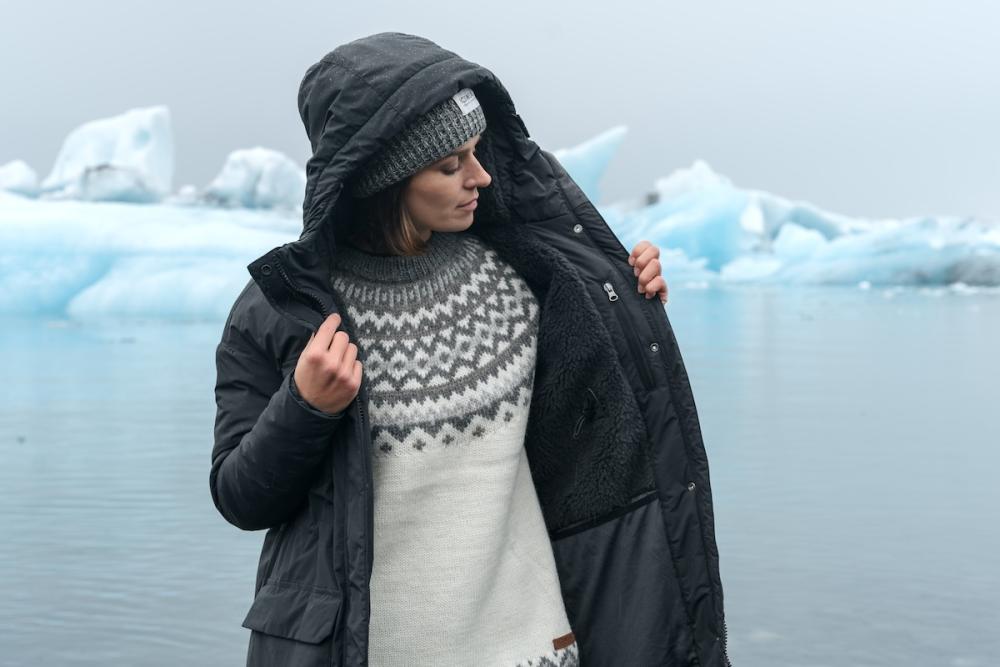Any active outdoor lifestyle calls for well-planned dressing. Visitors to Iceland who go on a tour, such as the Golden Circle day tour, can do with a warm down jacket and hat. Those who plan to do more adventurous hiking, such as going out on the glacier, will need to dress in layers.
The key for layered clothing is to avoid getting too wet or cold, keeping in mind that overheating will lead to moisture through perspiration. Don’t be tricked into thinking one heavy jacket will take care of your winter dressing. Instead, you can apply a good layering strategy to any activity level in any climate to regulate your body temperature and avoid getting too wet.
What is the Outer Layer?
Your outer layer is about protection from wind and precipitation. Keep in mind that you will be combining it with inner layers, so it’s a good idea to keep it loose enough to fit over thicker clothing. You may not wear your outer layer the entire day, so you’ll prefer to keep that layer lightweight both for when you’re wearing it and for when you’re carrying it in your backpack. To prevent your body overheating and perspiring even as it keeps the rain out, it’s good for your outer layer to have zippers that allow for ventilation. And don’t neglect your bottom half: wind-resistant and water-repellant hiking pants are also an important part of your outdoor dressing.
What is the Middle or Mid layer?
The middle layer of dressing is about insulation, so it must retain heat. Think warmth and coziness and flexibility. It also serves as your second line of defence against any moisture and wind that manages to get past the outer shell. This layer that can vary throughout your day as your activity level increases and decreases. Wool and fleece are ideal options for your insulating layer, and excellent opportunity to put your Icelandic wool sweater to good use.
What is the Base Layer?
Your base layer should give you a small amount of insulation, but really the important factor is moisture control. The fabric that’s closest to your skin has to keep your body temperature regulated—not too cold, not too hot. The base layer should fit snugly to the skin, and it should be a fabric that breathes and can draw perspiration away from your body. Beware: cotton is a bad choice because it soaks up your body’s moisture but doesn’t dry out, which will leave you feeling colder. When dressing for activities in cold weather, long underwear made from merino wool is ideal. The wool is cozy and moisture-wicking, and because it is breathable it also protects you from overheating.
The beauty of layered dressing is the flexibility it gives you throughout your day. On a day of heavy trekking, when the weather is not too cold, your body is generating a lot of heat so you might wear a base layer and an outer layer. During breaks, or times of lower-intensity activity, you should consider adding an extra layer of insulation to keep the heat inside. But don’t forget: take time to ventilate before adding layers. Open zippers and loosen your cuffs of your outer layer so any moisture can have a chance to move away from the body before you insulate.
When you’re active outdoors, you are not only concerned with the weather. You also need to be prepared for changing levels of activity through the day and the changes in body temperature that go along with it. Good layering will keep you covered for all eventualities as you move about in the outdoors.








